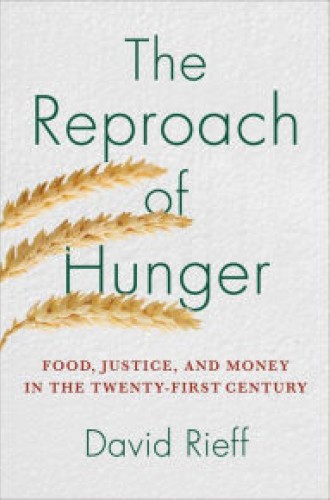Can hunger end?
In 2007 and 2008, food prices jumped sharply worldwide: wheat more than doubled in price, and rice was up by over half. In many parts of the world, people living on one or two dollars a day were simply unable to purchase the food they needed to survive. David Rieff’s book is framed by that unexpected spike in prices.
The food price spike was especially troubling because some of the causes—population increase, commodity speculation, increased meat consumption in China and India—were human-made and are unlikely to change. In other words, such spikes could easily happen again and more frequently. Rieff focuses on food prices because he believes that in the future high food prices will cause political and social unrest with far-reaching consequences. This gloomy book questions the ability of the human race to feed itself at all, much less eliminate hunger, as many suggest is possible.
Read our latest issue or browse back issues.
Rieff outlines the debate between those who are optimistic about efforts to eliminate hunger, a group he refers to as food security advocates, and those who are pessimistic about hunger ever being remedied in the current socioeconomic system, the food sovereignty camp. Among the optimists are people like Bill Gates, Jim Yong Kim at the World Bank, and Jeffrey Sachs at Columbia University. They believe that for the first time in history, with the right interventions, sustained global agricultural development could allow everyone sufficient food. They see hunger as a technical problem and contend that the combination of liberal capitalism and public-private partnerships will enhance the world’s ability to solve hunger and malnourishment.
On the opposite side is the food sovereignty movement, made up of activists in groups such as La Vía Campesina, which opposes transnational corporate agricultural interests as damaging to the interests of small farmers. The food sovereignty movement advocates for systemic change and argues that profit seeking by large agricultural corporations and investors perpetuates social exclusion and generates hunger, particularly in rural areas. This group sees little chance of ending hunger and emphatically rejects the capitalist model of attempting to do so. Rieff’s places his sympathies, somewhat unwillingly, with the food sovereignty position because he is concerned about the ability of humanity to feed itself in the future with the world’s population predicted to reach 9 billion by 2050.
If we strip the contemporary names from the debate, we are looking at an old argument—that between Thomas Malthus, who worried about the coming population bomb, and Ester Boserup, who argued that population pressure leads to technological innovations, which increase agricultural productivity. Although they were writing in different centuries, one could argue that Malthus in the 18th century wanted systemic change and Boserup in the 20th century was just an optimistic technocrat. So far, thankfully, Boserup has proven right.
In discussing whether the effective response to famine can translate into tackling malnutrition, Rieff recognizes that these are two very different problems; one is concentrated in place and time, and the other is diffuse. Additionally, Rieff gives a great deal of attention to public narratives about hunger. The “sunny talk” that Rieff attributes to the optimistic technocrats such as Gates and Sachs makes it appear that we know the way to end hunger and masks the real political and social challenges that must be faced.
Rieff proposes that the dominance of this optimistic perspective about hunger exemplifies a 21st-century consensus that it is “immoral to argue that there are limits on what can be accomplished.” Rieff believes that the stronger the consensus that we can solve the technical problem of hunger, the less likely we are to create systemic change that would truly solve it. I hope he is wrong. I think he misunderstands the contours of the problem.
The binding constraint on progress against hunger is weak political commitment. In the past it was possible to achieve changes that effectively addressed hunger and malnutrition. Rieff notes some such changes in his discussion of progress in combating famine. More serious political commitment would lead to constraints on the excesses of capitalism—for example, limitation of large-scale commercial developments that push very poor people off their land. We have seen glimmers of the needed political commitment in the reinvigoration of the UN Committee on World Food Security, its work with civil society organizations such as La Vía Campesina, and its development of voluntary guidelines for responsible governance of land tenure, fisheries, and forests—which resulted from negotiations among 96 governments and 30 civil society organizations in the wake of the food-price crisis of 2007 and 2008.
These are significant international and intergovernmental responses to the problems that drove Rieff to write his book. They also bridge the divide between technocrats and food sovereignty advocates, giving reason for hope. Getting the United States and other governments to make hunger and poverty a higher priority would further reconcile the divisions between these two groups and lead to progress in ending hunger and malnutrition.






